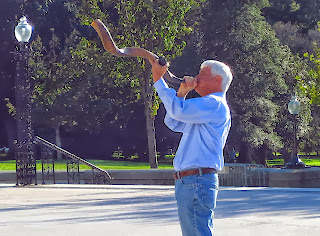As I said in an earlier post, much of the motivation in coming to Oregon was to help guide a group of Pacific University students up Mt. Rainier. An added motivation was the chance to do a personal climb up Rainier, a mountain I had never been on. To make matters even better, I'd be climbing with my good friends Phil (who lives in Oregon and works for Pacific) and Matt Hardy (currently living the expatriate life in Cambodia). The stars aligned and we all three were going to be in Oregon in early June. Having teamed up for a very successful climb of Mt. Hood several years ago, the conditions looked good for an attempt on Rainier via the highly coveted "Liberty Ridge" route.
In 1979, two major climbers of the day (Allen Steck and Steve Roper) created a list of the best, hardest, and most "classic" routes in North America. Some are pure rock climbs, some are pure snow/ice climbs, and others are somewhere in between. Their list, 50 climbs long, formed the classic mountaineering book "Fifty Classic Climbs of North America". Of course, any list like this was bound to be controversial, but it's worth noting that no one, to this day, has climbed all 50.
Fifty Classic Climbs of North America by Roper & Steck; 1979
One of the climbs in the Pacific Northwest, and the only one on Mount Rainier, is Liberty Ridge. Liberty Ridge is the North Ridge of Rainier, and sees very little traffic. The vast majority of climbers who attempt Rainier every year choose the southern route, with various routes getting the remainder. Liberty Ridge gets a small percentage, primarily because it has a longer approach, is longer, steeper, more technically difficult, and sees a higher number of accidents and rescues. Unless you are climbing at a very high level, it requires at least one overnight on the route, and once the route becomes steep (about 1/2 way through), retreat isn't much of an option. As the old saying goes, "the only way off is up."
Liberty Ridge is the prominent ridge in the middle of the North Face.
I'll spare you all the petty details, but suffice it to say that Liberty Ridge lived up to its reputation. It was long, steep, and treacherous. We camped at Thumb Rock (10,760') and spent hours listening to avalanches and rockfalls scour the adjacent faces. We experienced wild temperature changes, from scorching sun that left us with blistered lips and faces to howling winds and blowing snow that left us mildly hypothermic, with our bodies unconsciously shivering in a feeble attempt to stay warm. Here's a couple of pictures that convey part of what we experienced.
Approaching St. Elmo's Pass
Phil & Hardy crossing the Emmons Glacier.
After crossing the glaciers, the route increases once we reached the "toe" of the ridge.
High on the route.
The final pitch below Liberty Cap, after the storm had descended in full force.
Sunrise at Camp Schurman, after an18 hour day up & over.
The intrepid and successful mountaineers.
I'll close with a quote that has become a bit more personal lately: "For most mountaineers, the main ingredient for a happy climb is good companionship. As one's climbing extends into the middle years, he becomes all the more aware of the camaraderie developed among friends who've shared numerous ascents on many peaks....in later years, the mellowing process takes over & the aging mountaineer dwells more on the enjoyments of companions & shared experiences."-- Dee Molenaar
In "Mount Rainier, Part 2", I'll relate the story of the Pacific trip that originally brought me to Oregon. Come back soon.....




















































